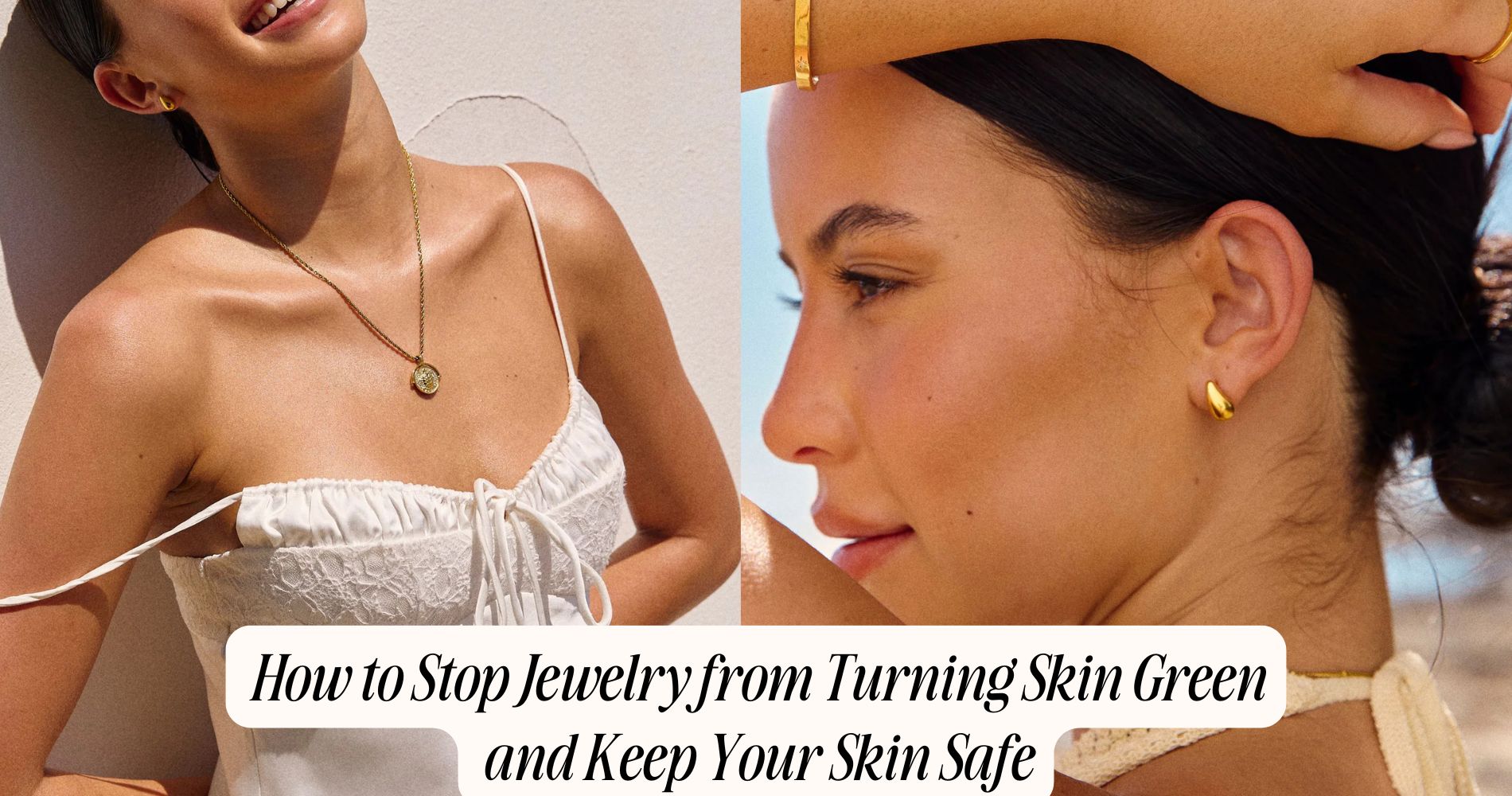
How to Stop Jewelry From Turning Skin Green and Keep Your Skin Safe
How to stop jewelry from turning skin green starts with understanding how different metals react with your skin. Jewelry made from copper and nickel often causes irritation and discoloration, leading to that unwanted green tint. To avoid this, opt for hypoallergenic materials like surgical stainless steel or titanium. You can also explore hypoallergenic jewelry for skin-friendly options. Applying clear nail polish to the inner surface of your jewelry can create a protective barrier, while keeping your pieces dry and properly stored helps prevent reactions. With the right choices, you can enjoy your jewelry without worrying about skin discoloration.
Understanding Skin Reactions
When you wear jewelry, it's essential to understand how your skin can react to certain metals. Your skin chemistry plays a significant role in determining whether you'll experience allergic reactions.
Some people have sensitive skin that reacts to nickel, copper, or other alloys commonly used in jewelry. This reaction can manifest as redness, itching, or irritation, leading to discomfort.
To minimize these risks, consider hypoallergenic options made from materials like stainless steel, titanium, or sterling silver. Always assess your skin's response when trying new pieces; if you notice any adverse effects, it's best to remove the jewelry immediately.
Knowing your skin's unique chemistry can help you make informed choices, ensuring a comfortable and enjoyable jewelry experience.
Common Metals That Cause Discoloration
Several common metals can lead to skin discoloration, particularly when they react with sweat or moisture. One of the primary culprits is copper alloys. When these metals come into contact with your skin, they can oxidize, resulting in that green stain.
Nickel exposure is another significant factor; many people experience allergic reactions to nickel, which can cause irritation and discoloration. Even small amounts in jewelry can trigger a response.
Additionally, metals like brass, often composed of copper and zinc, can exacerbate these reactions. To avoid these issues, it's essential to know your jewelry's composition and choose pieces that minimize the risk of skin discoloration.
Keeping your skin dry and clean can also help reduce these unwanted reactions.
Choosing Hypoallergenic Jewelry
To prevent skin discoloration caused by irritating metals, consider choosing hypoallergenic jewelry. Hypoallergenic materials, such as surgical stainless steel, titanium, and certain plastics, minimize the risk of allergic reactions and skin irritation.
When shopping, look for jewelry certifications that indicate the product meets safety and allergy standards. Reputable brands often provide this assurance, which helps you make informed choices.
Additionally, always check for nickel content, as it's a common irritant. By opting for certified hypoallergenic options, you can enjoy your jewelry without worrying about skin reactions.
Applying Clear Nail Polish
Applying clear nail polish to your jewelry can create a protective barrier that prevents skin discoloration.
This method is simple and effective, but it requires proper application techniques for the best results.
Regular maintenance will guarantee the polish remains intact, extending the life of your jewelry and keeping your skin safe.
Benefits of Clear Polish
Ever wondered how a simple coat of clear nail polish can safeguard your skin from the unsightly effects of jewelry?
The benefits of prevention are significant. By applying clear polish, you create a barrier between your skin and the metal, reducing the risk of irritation and discoloration. This clear polish application helps prevent reactions to nickel and other alloys commonly found in costume jewelry.
Not only does it protect your skin, but it also prolongs the life of your jewelry by preventing tarnishing. Additionally, this quick and easy solution can save you from the discomfort of green stains and allergic reactions.
With just a few minutes of effort, you can enjoy your favorite pieces without worrying about skin damage.
Application Techniques Explained
While it might seem like a simple task, applying clear nail polish to your jewelry requires a few careful steps to guarantee maximum effectiveness.
Start by cleaning your jewelry thoroughly to remove any dirt or oils. Once dry, use a small brush or the polish applicator to apply a thin, even coat of nail polish on the areas that typically touch your skin.
Focus on the back of rings and the inside of bracelets. Avoid overapplication; less is more, as thick layers can chip easily.
Allow the polish to dry completely before wearing the jewelry. With these application techniques, you can create a protective barrier, helping prevent your skin from turning green while enjoying your favorite pieces.
Longevity and Maintenance Tips
To guarantee the longevity of your clear nail polish application on jewelry, regular maintenance is key.
Start by reapplying the nail polish every few weeks, especially if you notice any wear or chipping.
Make sure to clean your jewelry with a soft cloth before each application; this removes oils and dirt that can compromise adhesion.
Avoid exposing your jewelry to harsh chemicals, such as perfumes or cleaning products, as they can degrade the polish.
When not in use, store your jewelry in a cool, dry place, ideally in a soft pouch or a lined box, to prevent scratches.
Following these maintenance tips won't only enhance jewelry longevity but also keep your skin safe from unwanted reactions.
Keeping Jewelry Dry
Since moisture can accelerate the tarnishing of jewelry and lead to skin reactions, keeping your pieces dry is essential.
To achieve effective moisture control, always store your jewelry in a cool, dry place. Use airtight containers or anti-tarnish pouches to limit exposure to humidity.
When you're not wearing your jewelry, avoid leaving it in damp areas like bathrooms. Instead, designate a specific spot for jewelry storage that's away from direct moisture sources.
If your pieces get wet, dry them immediately with a soft cloth to prevent tarnishing. Additionally, consider using silica gel packets in your jewelry storage to absorb any excess moisture.
Taking these simple steps will help maintain the integrity of your jewelry and protect your skin.
Regular Cleaning Techniques
Regular cleaning techniques are essential for preventing jewelry from turning your skin green. To maintain proper jewelry care, clean your pieces regularly with gentle cleaning solutions.
Start by using a soft cloth to wipe away dirt and oils after each wear. For a deeper clean, create a solution of warm water and mild soap. Soak your jewelry for a few minutes, then gently scrub with a soft brush, focusing on intricate details where grime accumulates.
Rinse thoroughly to remove any soap residue and pat dry with a clean cloth. Avoid abrasive materials that can scratch the surface.
Avoiding Harsh Chemicals
To keep your jewelry from turning your skin green, focus on avoiding harsh chemicals.
Choose quality materials that are less reactive, and limit exposure to moisture to maintain their integrity.
Regularly and carefully clean your pieces with gentle solutions to protect both your jewelry and your skin.
Choose Quality Materials
Choosing quality materials is essential if you want to prevent your jewelry from turning your skin green. When it comes to gold vs silver, opt for higher purity metals. For gold, look for pieces marked 14K or 18K, which contain a higher percentage of pure gold.
In silver, choose sterling silver, which is 92.5% pure, reducing the likelihood of reactions with your skin. Cheaper alternatives often contain alloys or harsh chemicals that can irritate your skin and cause discoloration.
Limit Exposure to Moisture
Even the highest quality jewelry can suffer from exposure to moisture and harsh chemicals. To protect your pieces, limit moisture exposure as much as possible.
Humidity effects can tarnish metals and lead to discoloration, causing that dreaded green stain on your skin. Whenever you wash your hands, shower, or swim, remove your jewelry to prevent contact with water.
Additionally, be cautious with household cleaners, perfumes, and lotions, as harsh chemicals can damage your jewelry's finish and increase the likelihood of skin reactions.
Store your pieces in a dry, cool place, and use anti-tarnish pouches or cloths to minimize humidity effects.
Clean Regularly and Carefully
While regular cleaning is essential for maintaining your jewelry's appearance, it's crucial to do so carefully and without harsh chemicals.
Many commercial cleaners contain abrasive substances that can damage your pieces and irritate your skin. Instead, opt for safe cleaning products like mild soap and warm water or a gentle jewelry cleaner specifically designed for your materials.
Employ jewelry cleaning techniques such as using a soft cloth or a soft-bristled toothbrush to remove dirt and grime. Rinse thoroughly and dry your jewelry properly to prevent any residue that could lead to skin reactions.
Storing Jewelry Properly
To prevent your jewelry from turning your skin green, proper storage is essential.
Start by organizing jewelry in a way that minimizes contact between pieces. Use fabric-lined boxes or dedicated organizers with compartments to prevent scratching and tarnishing.
Keep your accessories in a dry, cool place, away from direct sunlight and humidity, which can accelerate oxidation. You might also consider using anti-tarnish pouches or cloths to absorb moisture.
When storing, make certain that metal pieces aren't touching each other, as this can lead to wear and tear.
Choosing Quality Over Cost
When you prioritize quality over cost in your jewelry purchases, you not only enhance your collection but also greatly reduce the risk of skin reactions.
Investing in pieces with high craftsmanship quality means you're choosing items made from durable materials, which are less likely to tarnish or cause irritation.
Cheap jewelry often contains base metals and low-quality coatings that can react with your skin, leading to discoloration or rashes.
By selecting well-crafted pieces, you guarantee that your jewelry will withstand daily wear while maintaining its beauty.
Remember, quality jewelry not only elevates your style but also safeguards your skin.
In the long run, spending a little more upfront can save you from discomfort and frequent replacements.
When to Seek Professional Help
If you notice persistent skin irritation after wearing jewelry, it's essential to seek professional help.
Severe allergic reactions can escalate quickly, leading to more significant health concerns.
Don't ignore these symptoms; consulting a dermatologist can provide the necessary guidance and treatment.
Persistent Skin Irritation
Persistent skin irritation can signal an underlying issue that needs attention. If you notice ongoing redness, itching, or swelling after wearing jewelry, it's essential to identify irritation triggers.
Begin by removing the jewelry and observing whether the irritation subsides. Consider skin sensitivity testing to pinpoint specific allergens or irritants.
If the irritation persists despite avoiding known triggers, or if you experience increased discomfort, it's time to seek professional help. A dermatologist can evaluate your skin condition and recommend appropriate treatments.
Don't ignore persistent symptoms, as they could indicate a more serious skin issue. Prioritizing your skin health guarantees you can enjoy your jewelry without adverse effects.
Severe Allergic Reactions
While jewelry can enhance your appearance, it can also trigger severe allergic reactions in some individuals.
If you experience symptoms like swelling, redness, or hives after wearing jewelry, you may be dealing with metal allergies or heightened skin sensitivity. These reactions can escalate quickly, so it's vital to monitor your symptoms closely.
If you're experiencing severe discomfort, or if symptoms persist beyond a few hours, don't hesitate to seek professional help. A dermatologist can assess your condition and recommend appropriate treatments, which may include allergy testing.
Frequently Asked Questions
Can Makeup or Lotions Contribute to Skin Discoloration From Jewelry?
Yes, certain makeup ingredients and lotion reactions can contribute to skin discoloration from jewelry. Ingredients like fragrances and alcohol may react with metals, leading to irritation and discoloration. Always check product labels for potential irritants.
Are There Specific Skin Types More Prone to Discoloration?
Yes, certain skin types are more prone to discoloration. If you have oily skin, moisture can react with metals, while sensitive skin might react to irritants, increasing the likelihood of skin discoloration from jewelry.
Does the Humidity Level Affect Jewelry Tarnishing and Skin Reactions?
Yes, humidity effects can accelerate tarnishing in jewelry, leading to skin reactions. To prevent tarnish, keep your jewelry in dry places and consider using anti-tarnish pouches or cloths to minimize moisture exposure effectively.
How Can I Identify the Metal Content in My Jewelry?
To identify the metal content in your jewelry, use metal testing kits or consult a professional jeweler. Understanding the metal composition is essential for effective jewelry care and preventing potential skin reactions from certain metals.
Is It Safe to Wear Jewelry While Exercising or Swimming?
Wearing jewelry while exercising or swimming can be safe, but be cautious. Sweat impact may tarnish certain metals, and chlorine exposure can damage your pieces. Consider removing jewelry to preserve its integrity during these activities.
Conclusion
By understanding the causes of skin discoloration and taking proactive steps, you can enjoy your jewelry without worry. Opt for hypoallergenic options, apply a clear nail polish barrier, and keep your pieces dry to minimize reactions. Avoid harsh chemicals and store your jewelry properly to maintain its quality. Remember, investing in high-quality items pays off in the long run. If skin irritation persists, don't hesitate to consult a professional for advice and solutions.








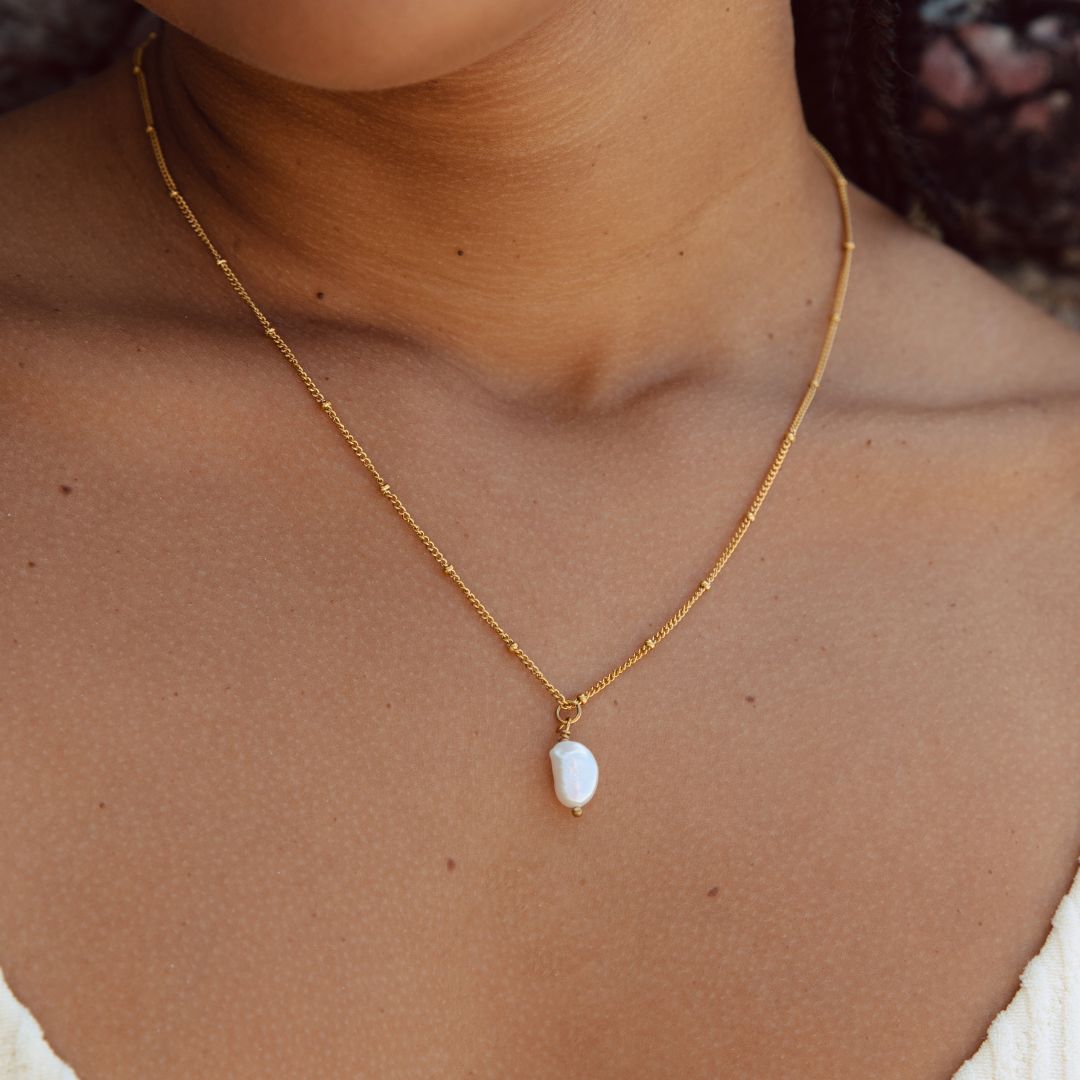

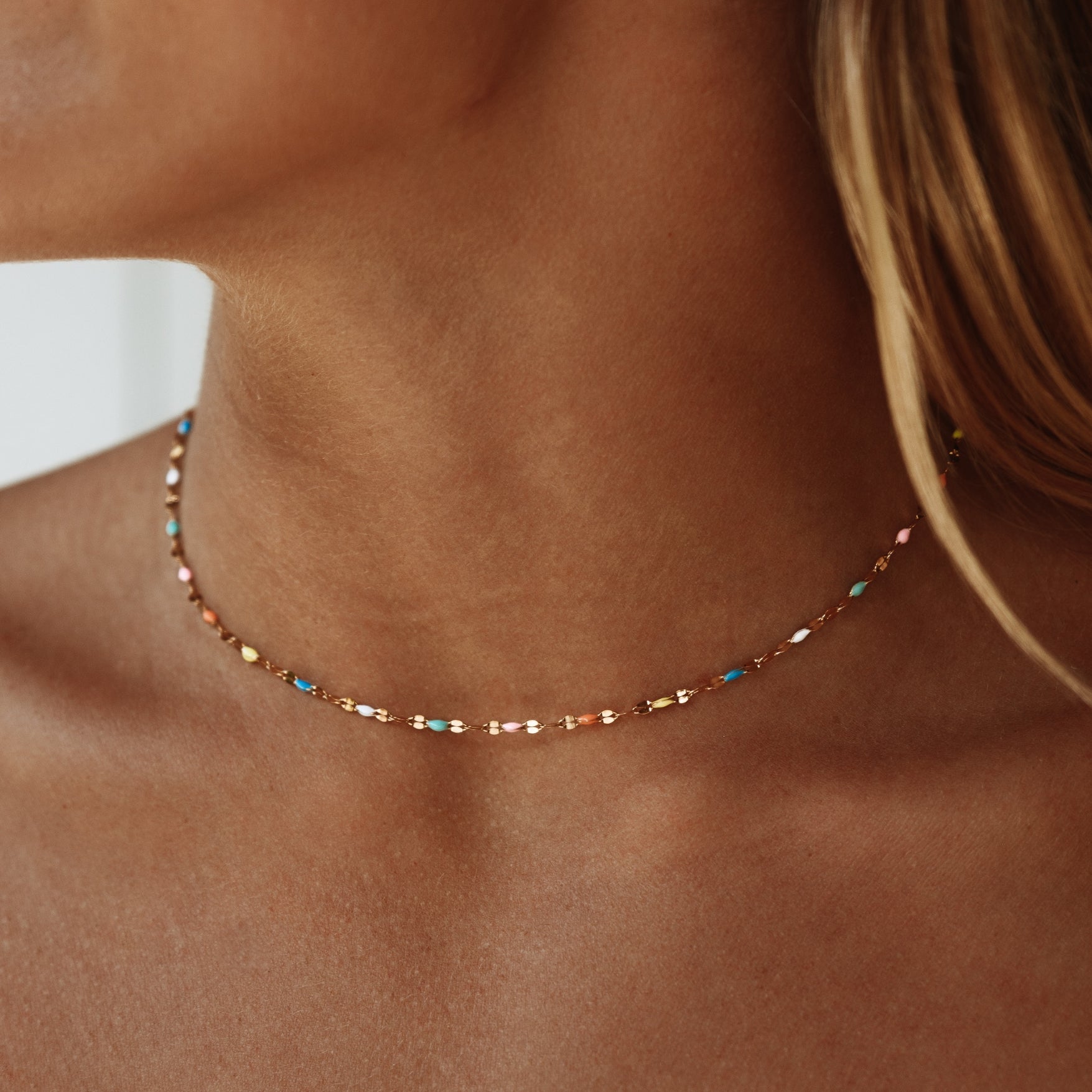


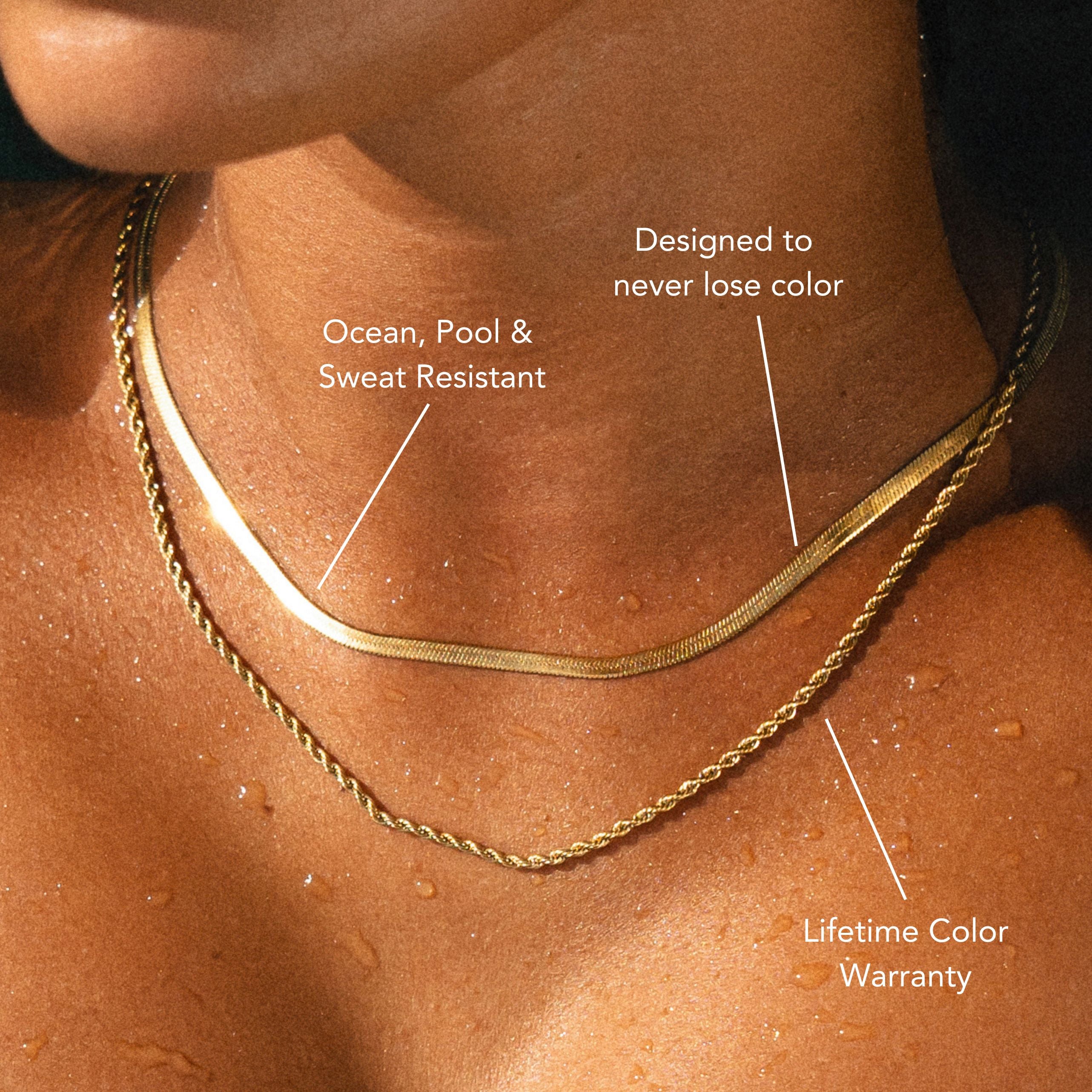
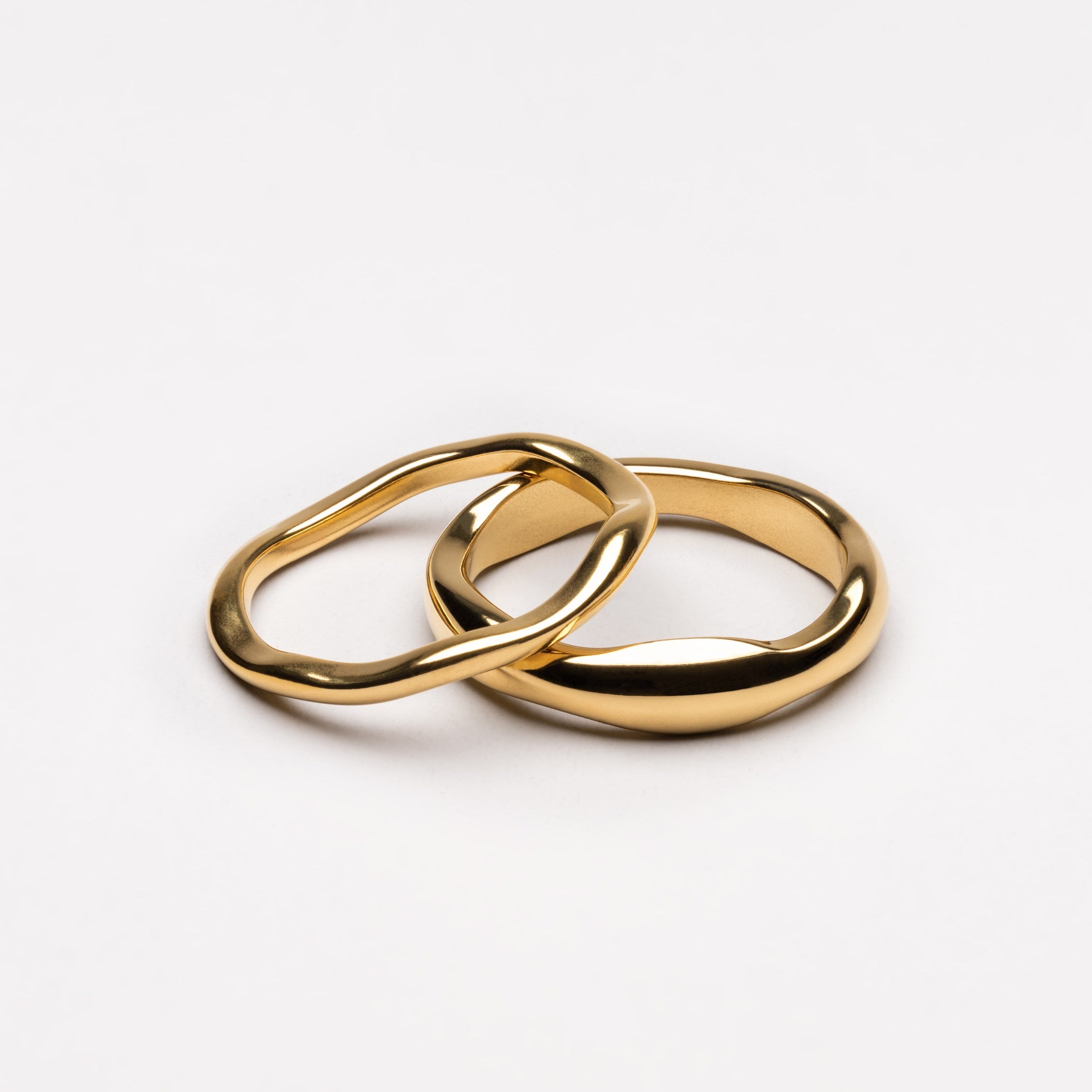
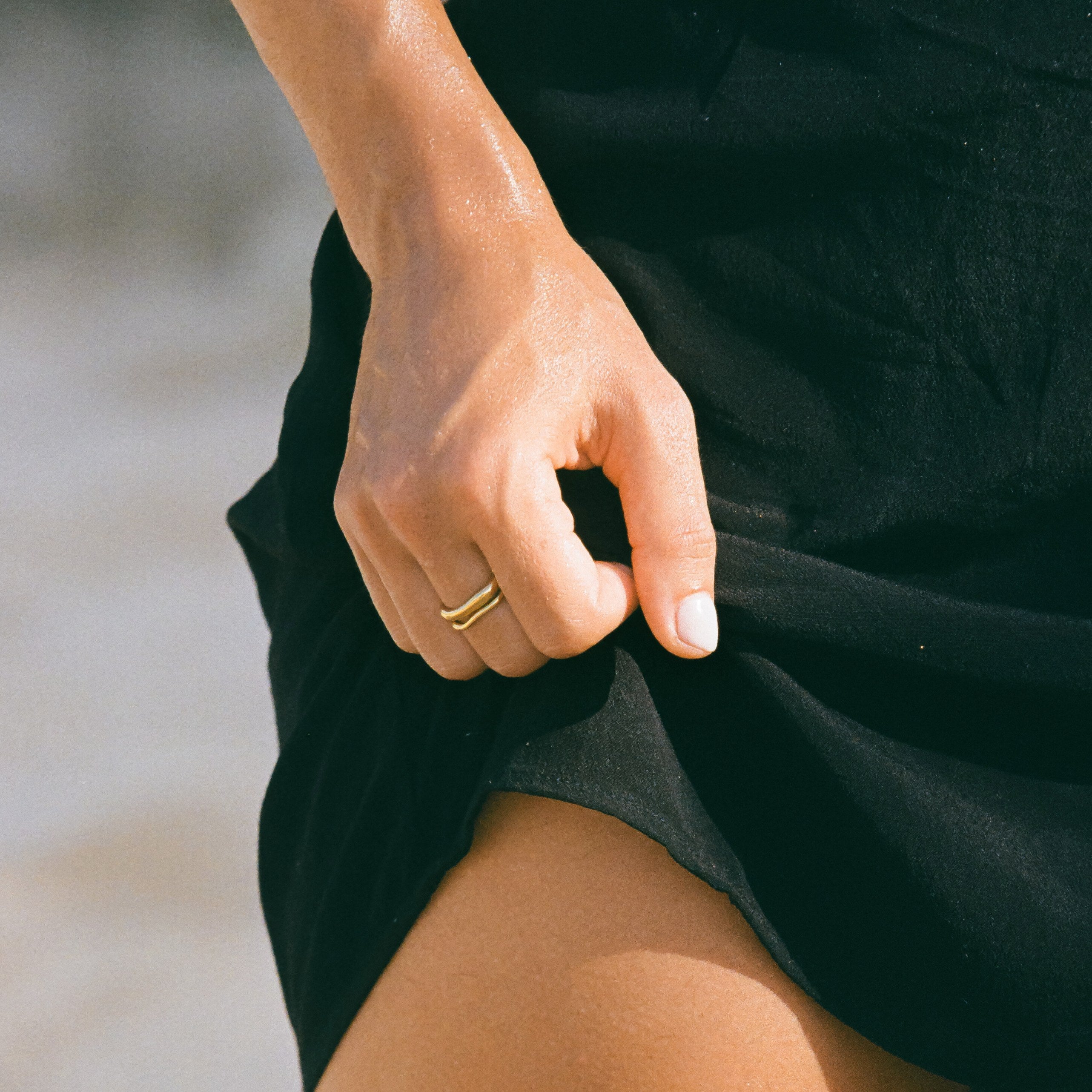

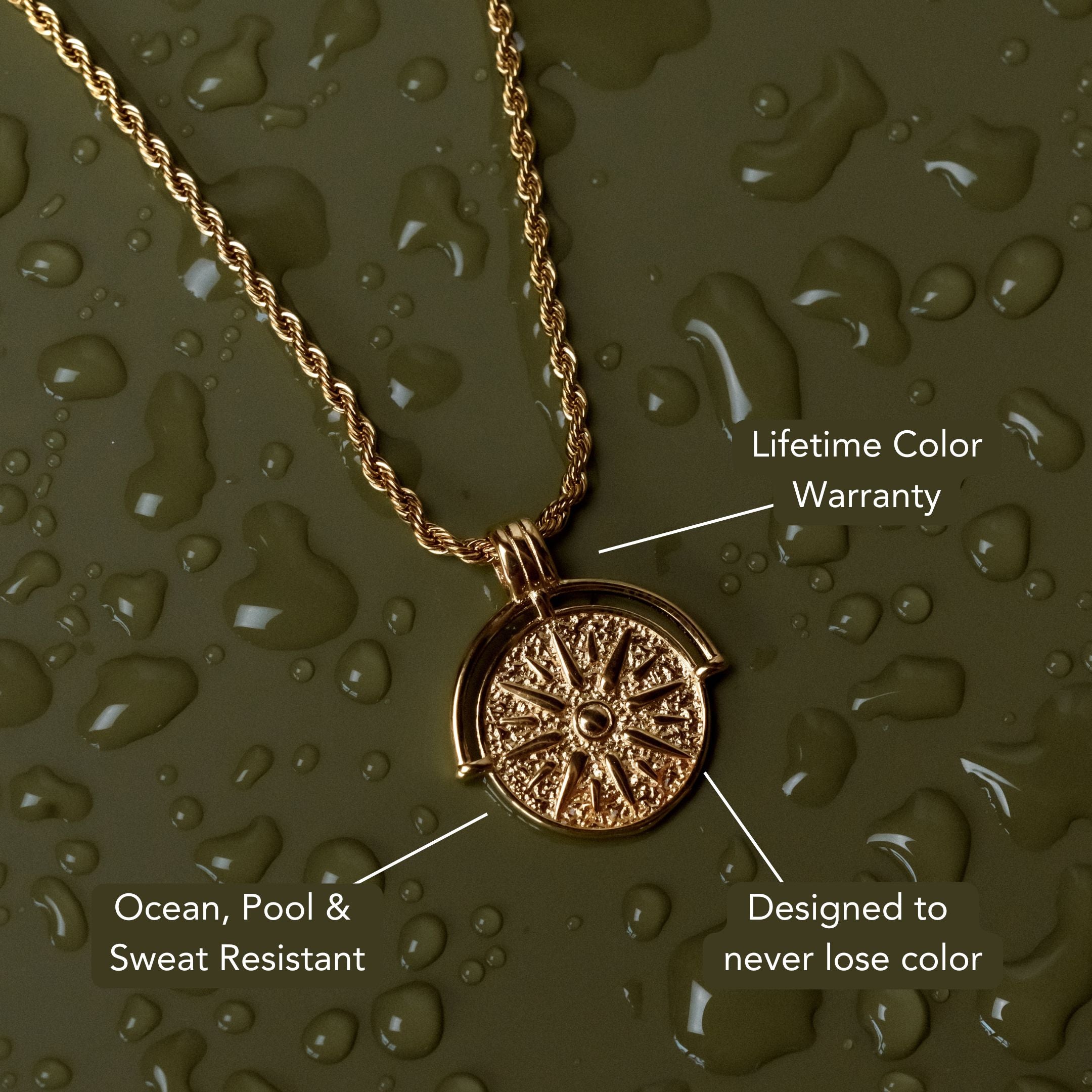

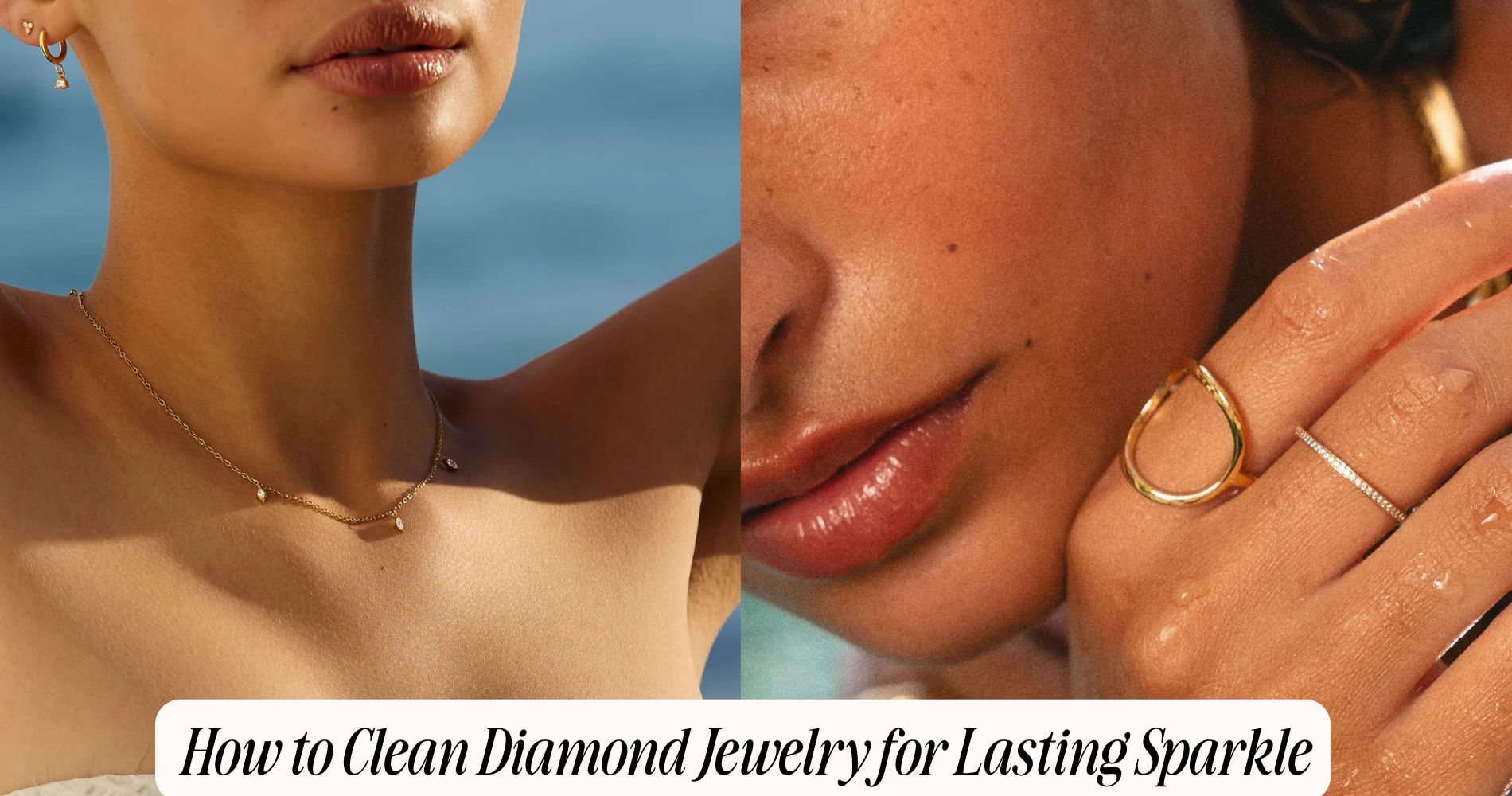




Leave a comment
This site is protected by hCaptcha and the hCaptcha Privacy Policy and Terms of Service apply.